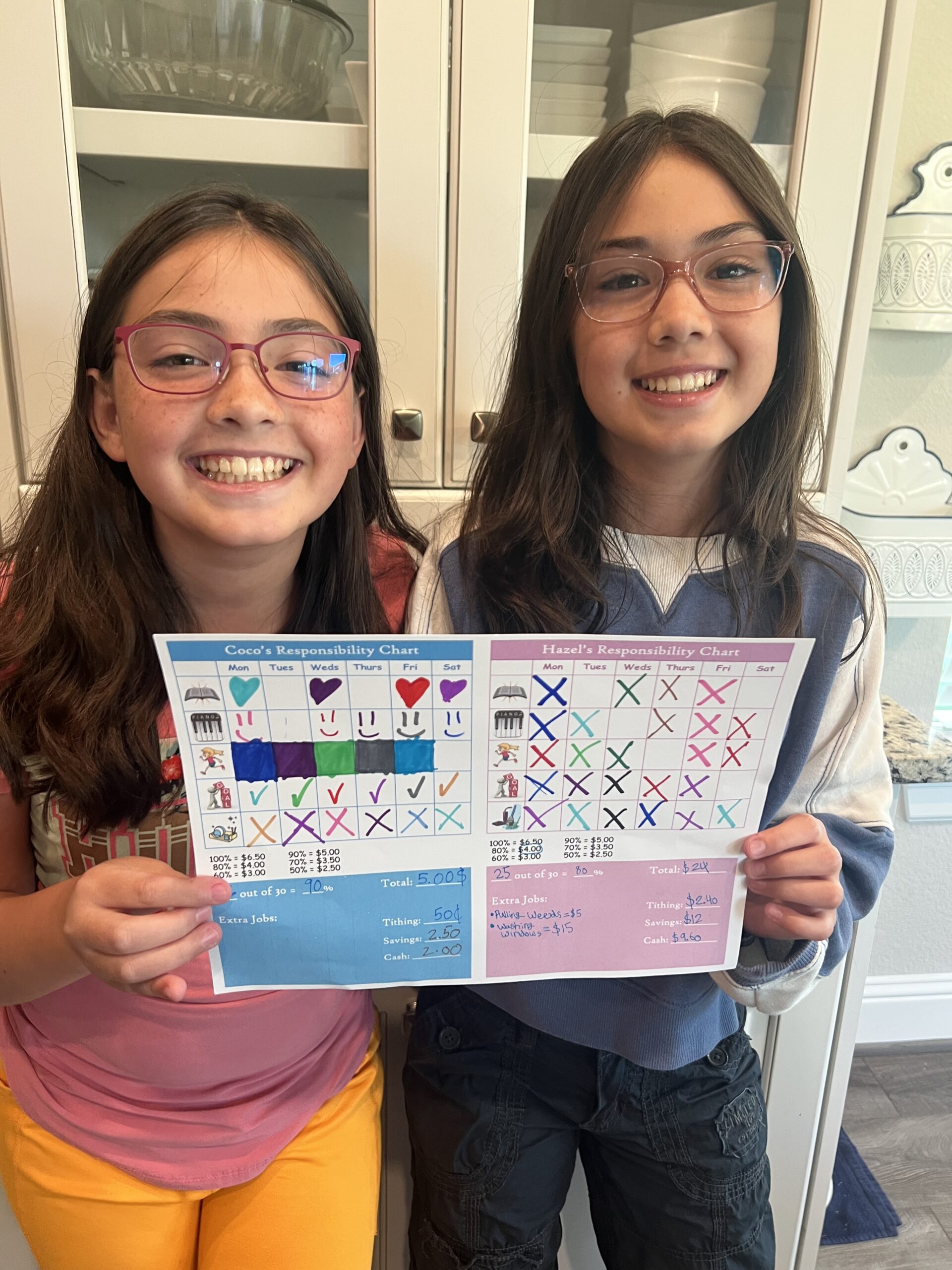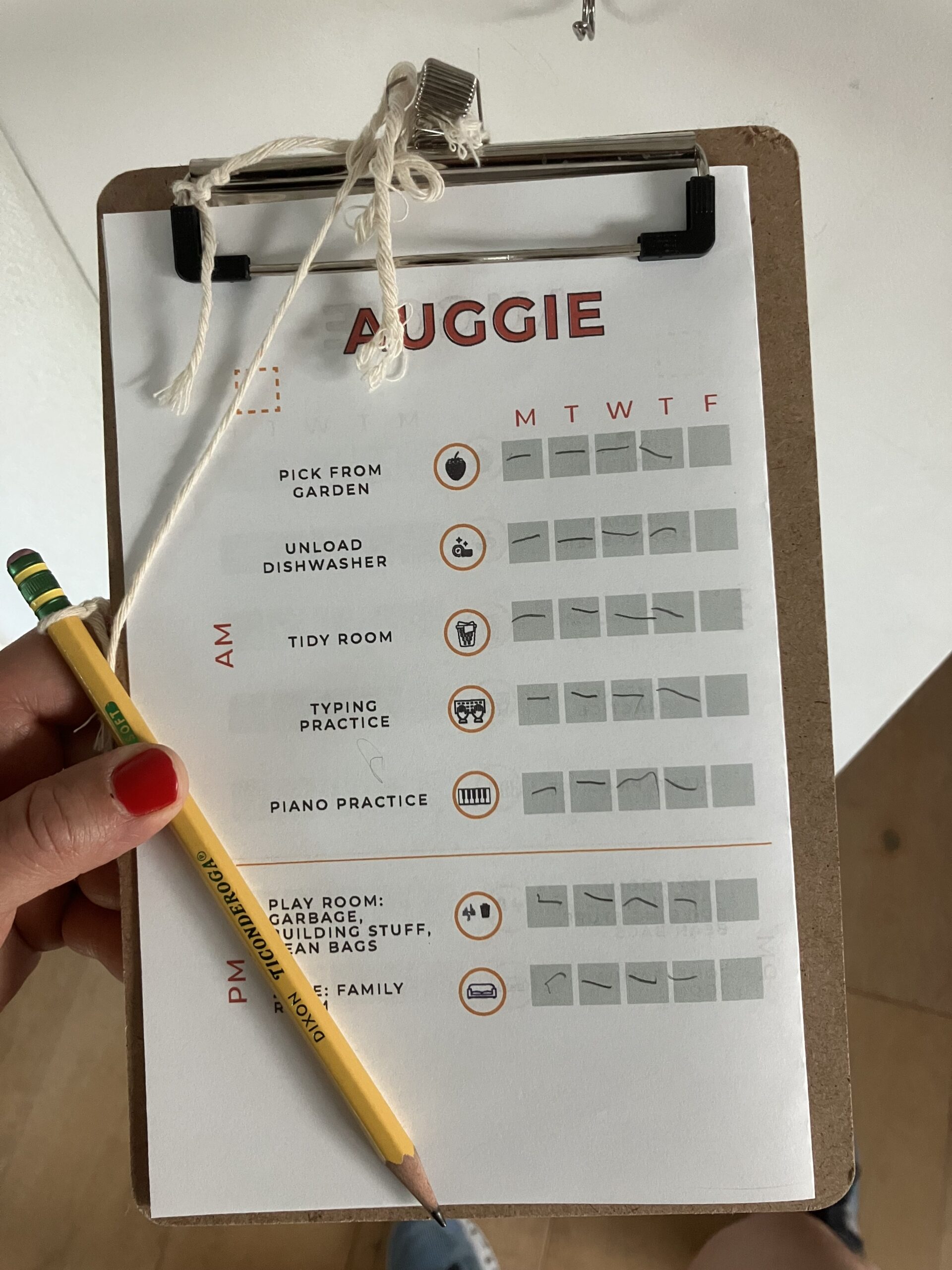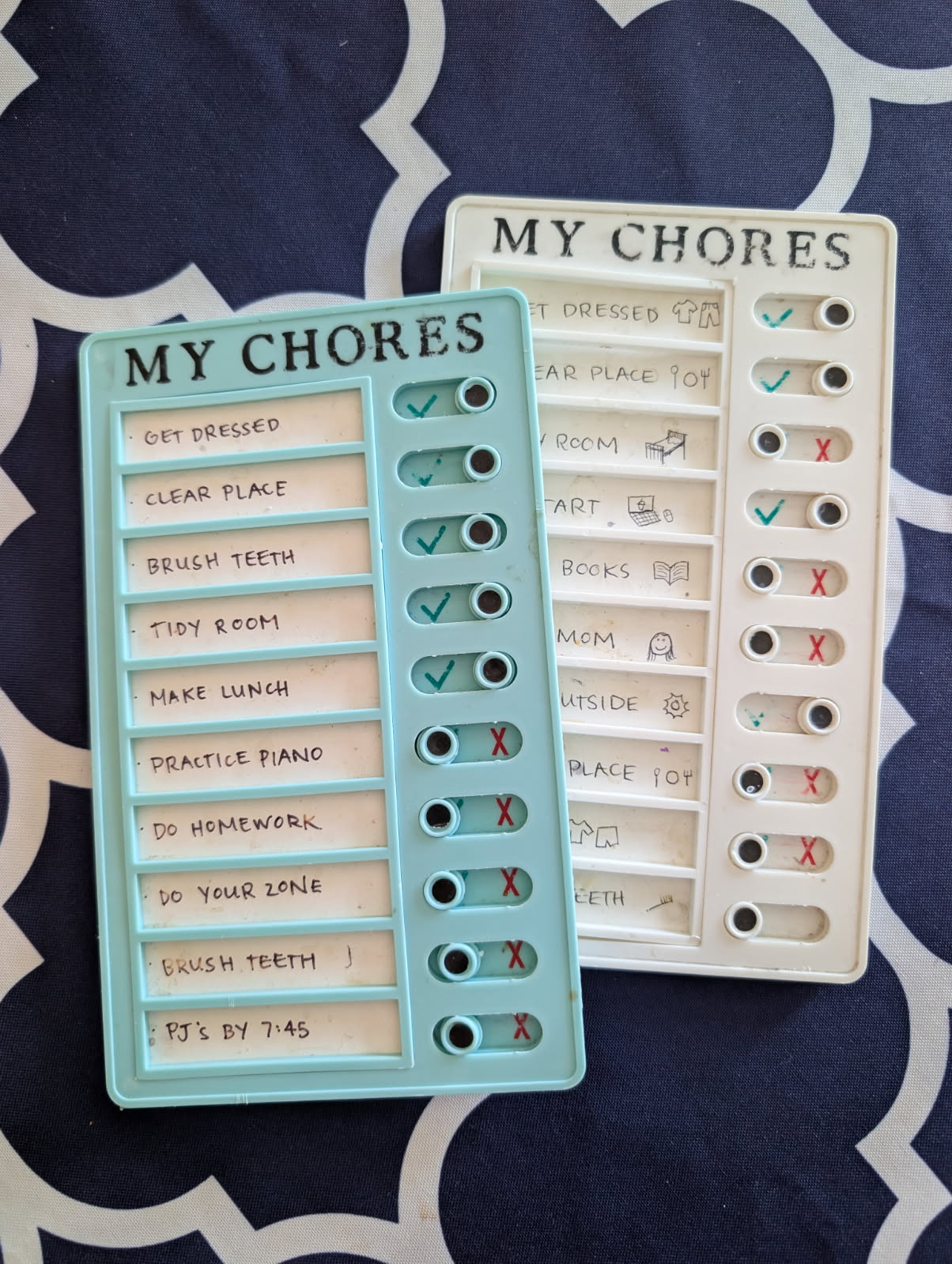Did you know there is not ONE right way to implement a family economy system into your home? When Ralphie teaches her popular webinar, “Teaching the Value of Work: The Family Economy,” one question she always gets is: “Do I have to do it exactly this way? Or can I make some changes for my family?”
The short answer is, ABSOLUTELY! Make whatever changes you need to create a family economy system that works for you and the rhythms of your family. As long as children are learning to work in the home and contribute to keeping the house running smoothly, you are doing it right. Let’s explore how Ralphie and her team run their own family economies.
Ralphie’s Family
In the Jacobs home, we have four parts of the day where my daughters need to complete tasks: morning, afternoon, zone, and evening. Each time of day has several components. For example, in order to get your “morning” checkmark, one must:
- Make bed
- Clean up breakfast
- Be ready for school on time
If she completes all these things, she gets her morning checkmark! The same goes for the other parts of the day.
Since there are four checkmarks possible for each day and we do the family economy on weekdays, this means there is a total of 20 checkmarks for each child to get in the week. My girls need to earn 18/20 checkmarks in the week in order to get full payment that week, which is their age in dollars. For example, if Sybil receives 18/20 checkmarks for the week, she can earn $11 since she is 11.
Lastly, when we distribute payments to our girls at the end of the week, we have them do some math practice to separate 10% out for charity, at least 30% out for savings, and the rest can go to spending.
Stephanie’s Family
Our family sets up our family economy based upon goals our children make, plus doing a chore to help the family. We call the chore “observe and serve,” which means each day they are responsible to look around the house and think of what would be helpful for them to do for the family. Once they do it, they can write down what they did to help out.
For my littles, I use a tracking sheet with little icons to help them remember the goals they set for the quarter. For the teenagers in high school, each Sunday they get their empty sheet and they will write down all their roles, responsibilities, and what their goal is for the week. They will fill in their schedules for work, practice, or school deadlines.
Throughout the week, they will mark the days off for the goals they have set. At the end of the week, they self-evaluate and get a percentage score based on how they rate the work they did. It really leads to great discussions, and it usually involves us having an extra opportunity to recognize all their hard work and efforts.
This is how we pay them:
- If they get a percentage score of 90% or higher, they earn the full amount
- The full amount is is $5 for littles (since they only pay for presents and little extras)
- The full amount for our teenagers is $50 (because they pay for their own clothes and personal items)
- They always have opportunities to do deep-cleaning jobs for extra money!
Ashley’s Family
When we first started our family economy, one of the biggest challenges was MY own forgetfulness about payday. To simplify things, I printed four weeks of charts on one sheet of paper, making payday a monthly event. This not only made it easier for me to manage but also exciting for the kids, who loved receiving a bigger payout!
We also clipped the charts to mini clipboards with attached pencils, ensuring the kids always had what they needed to track their progress. In our homeschool routine, we maximize productivity before breakfast, using the meal as a motivational gateway. All the tasks above the line need to be completed before breakfast, which reduces the nagging and helps them focus later in the day.
Additionally, during payday, we evaluate and adjust tasks on the charts. A simple change, like letting the kids pick new colors for their charts, keeps the process fun and engaging. This system has turned chores and responsibilities into a fun family tradition!
Brittany’s Family
Instead of having checkmarks separated into times of day, we’ve found it helpful to separate out tasks more. We found these inexpensive checklists with sliders for 10 different tasks they need to do each day. For example, instead of just saying “be ready for school on time,” they have three separate tasks of “get dressed,” “clean up breakfast,” and “make your lunch.” So really it’s not more or fewer tasks, it’s just divided up differently. You can tell that their charts are well-used; it’s probably time to get new ones!
For my littles who can’t read yet, I drew little pictures so they would know what the task is. They don’t have all the same tasks as the big kids since they are not in school full-time yet. Some of their different tasks include:
- Read books (by themselves, or with me)
- Play outside for 30 minutes
- Help mom
The “help mom” checkmark is an opportunity for me to teach them how to do lots of different things around the house before I assign them cleaning jobs as they get older.
Instead of calling it a “zone,” now we we call it “care for the home.” During the school year it’s usually the same designated spot each week, but during the summer it can be a different job I need them to do each day.
Since there are 50 checkmarks for each week, if they get 40 checkmarks, they can get full payment. We pay them every Saturday morning, and they have the potential to earn their age in dollars.
If you are interested in starting a family economy in your home, you might like these resources:





